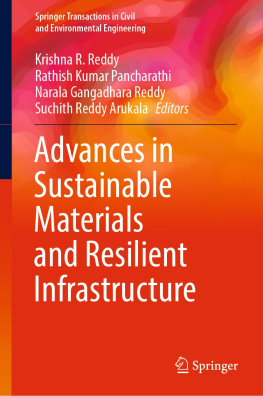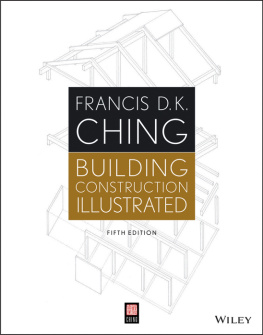Springer Textbooks in Earth Sciences, Geography and Environment
The Springer Textbooks series publishes a broad portfolio of textbooks on Earth Sciences, Geography and Environmental Science. Springer textbooks provide comprehensive introductions as well as in-depth knowledge for advanced studies. A clear, reader-friendly layout and features such as end-of-chapter summaries, work examples, exercises, and glossaries help the reader to access the subject. Springer textbooks are essential for students, researchers and applied scientists.
More information about this series at http://www.springer.com/series/15201
Manuel Bustillo Revuelta
Construction Materials
Geology, Production and Applications
1st ed. 2021

Logo of the publisher
Manuel Bustillo Revuelta
Faculty of Geology, Complutense University, Madrid, Spain
ISSN 2510-1307 e-ISSN 2510-1315
Springer Textbooks in Earth Sciences, Geography and Environment
ISBN 978-3-030-65206-7 e-ISBN 978-3-030-65207-4
https://doi.org/10.1007/978-3-030-65207-4
Springer Nature Switzerland AG 2021
This work is subject to copyright. All rights are reserved by the Publisher, whether the whole or part of the material is concerned, specifically the rights of translation, reprinting, reuse of illustrations, recitation, broadcasting, reproduction on microfilms or in any other physical way, and transmission or information storage and retrieval, electronic adaptation, computer software, or by similar or dissimilar methodology now known or hereafter developed.
The use of general descriptive names, registered names, trademarks, service marks, etc. in this publication does not imply, even in the absence of a specific statement, that such names are exempt from the relevant protective laws and regulations and therefore free for general use.
The publisher, the authors and the editors are safe to assume that the advice and information in this book are believed to be true and accurate at the date of publication. Neither the publisher nor the authors or the editors give a warranty, expressed or implied, with respect to the material contained herein or for any errors or omissions that may have been made. The publisher remains neutral with regard to jurisdictional claims in published maps and institutional affiliations.
Cover illustration: Hoover Dam
Image courtesy by Luis Fueyo
This Springer imprint is published by the registered company Springer Nature Switzerland AG
The registered company address is: Gewerbestrasse 11, 6330 Cham, Switzerland
With all my affection, I want to dedicate this book to my mother-in-law Concha. She was the best person I ever knew.
The Author
Foreword
This book comprises 20 chapters that cover the entire set of materials commonly used in construction activities today, in buildings and infrastructure, all over the world. Moreover, an insight into the traditional use of construction materials, for example, stone, lime, ceramics, and wood, is provided in view of their relevance in historical heritage. Emphasis is give to the innovation of modern materials that took place in the past century, which resulted in the construction framework that characterizes our urban and logistics landscape at present. Thus, concrete, glass, metal alloys, bitumen products, new ceramics, and many other products used either as main component or minor part of buildings and infrastructures are described. Interestingly, the book offers a multifold approach to construction materials, encompassing the geological perspective and natural occurrence of raw materials, their extraction and treatments, as well as market and economics, without forgetting environmental constraints derived from their preparation and use.
Such an integrated view of both natural and manufactured materials requires an exhaustive compilation of data dealing with geology, mining, transforming industries, and trading, which demands a sound authorship. In this respect, Manuel Bustillo Revuelta took the advantage of a large part of his professional career, almost 40 years, acquiring quite a lot experience in the topic because of both research and teaching. As shown in this book, talking about construction materials needs a multidisciplinary approach by the author, which was fed through continuous visits to mines, quarries, and factories, encounters with other experts, etc., a task accomplished over the years and in several countries. I had the opportunity to share some of those activities with the author and, believe me, it is an experience that requires permanent contact with the industrial sectors, including fluid supervision of trade markets. As the editing of this book was completed during the covid-19 pandemic, it was, therefore, not possible to provide statistics on current production and economical perspectives, in a time when many uncertainties still exist.
This book represents a kind of summarized encyclopedia where a large scientific and technological audience will find consistent information for understanding the varied aspects of construction materials. Geology aspects are included in most chapters provided that the natural occurrence of common raw materials on the earths surface. Exploitation of these resources is described by showing update extraction methods. The manufacturing of huge amounts of both intermediate and end products is discussed in detail, taking in mind the multiple specificities of treatments and implementations to spread to both local and global markets. Regarding this point, all approaches to construction materials are referenced to current standards, that is, ASTM, EN, and ISO, which permanently contribute to normalize the use of commercial products at an international scale. These standards are listed at the end of the chapters together with a set of questions dealing with the discussed contents. This is in turn supplemented by a list of selected references and links to web pages from associations and companies.
Keeping in mind the profuse, but not excessive, information provided in this book, it will prove of great value for undergraduate and postgraduate students in geology, mining geology, and mining and industrial engineering as well as architects and professionals dealing with heritage buildings, environment managers, and so on. I am sure the book will be a superb reference for consultation in both technical and academia offices.
Jos P. Calvo
Acknowledgments
It is very clear to me that this second project for Springer would not have been possible without the assistance of my editor, Alexis Vizcano; he trusted me from the very beginning of my first Springer book. My thanks once again go to my friend and colleague Jose Pedro Calvo, who reviewed my imperfect English and wrote the foreword. I want to remember here our many, many hours shared in the laboratory with the students! Last but not least, thanks also go to the American Society for Testing and Materials (ASTM) for the use of its Terminology Dictionary, essential for definitions of building and construction materials and products referenced throughout the book. Needless to say, I accept full responsibility for all errors that might still persist in the book. On the other hand, I would like to acknowledge the help given for many companies who have kindly provided images related to all topics involved in the book. The acknowledgment remains forever in each figure caption. However, it is important to remember that many people were behind these corporations. I extend my gratitude to this friendly people.












